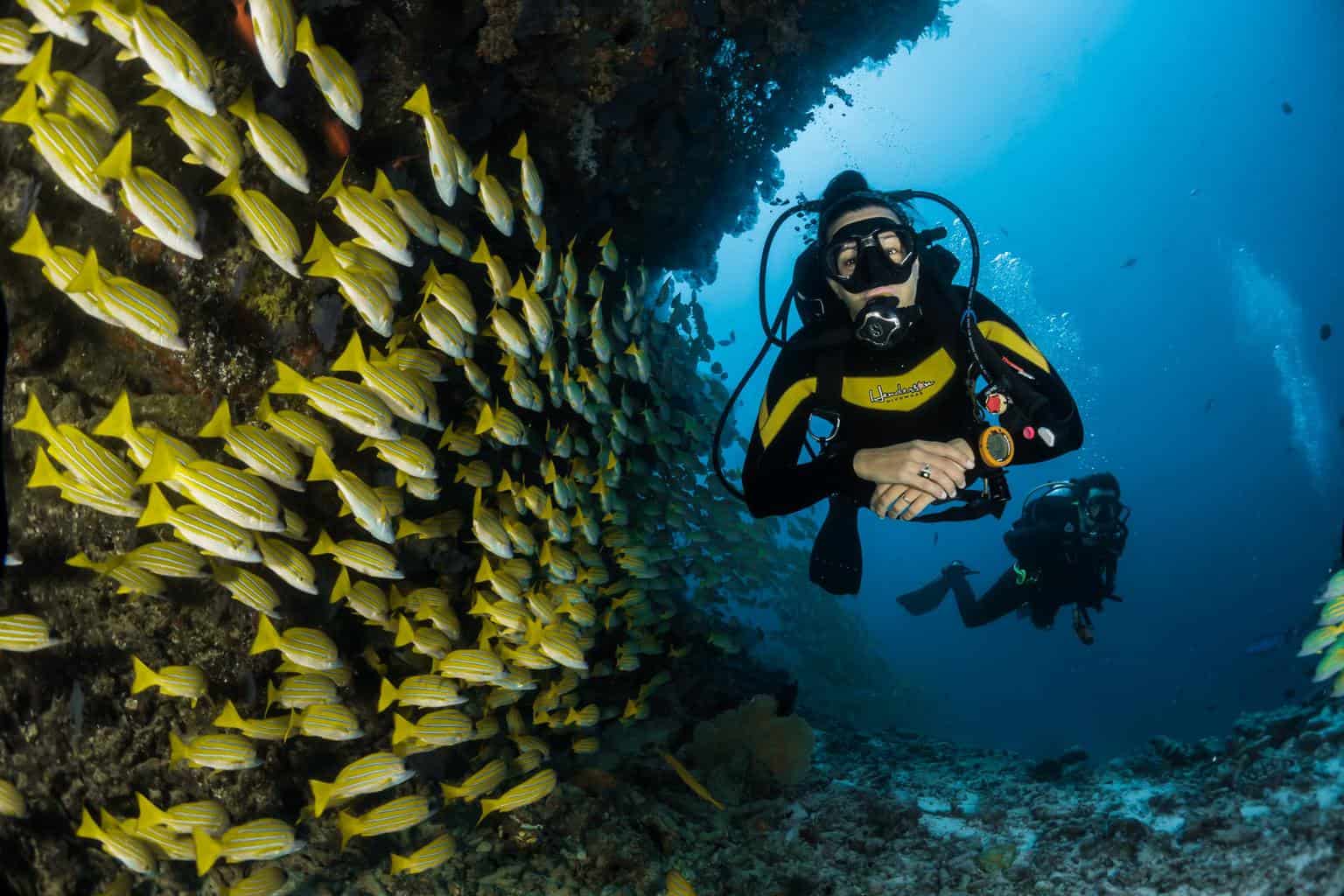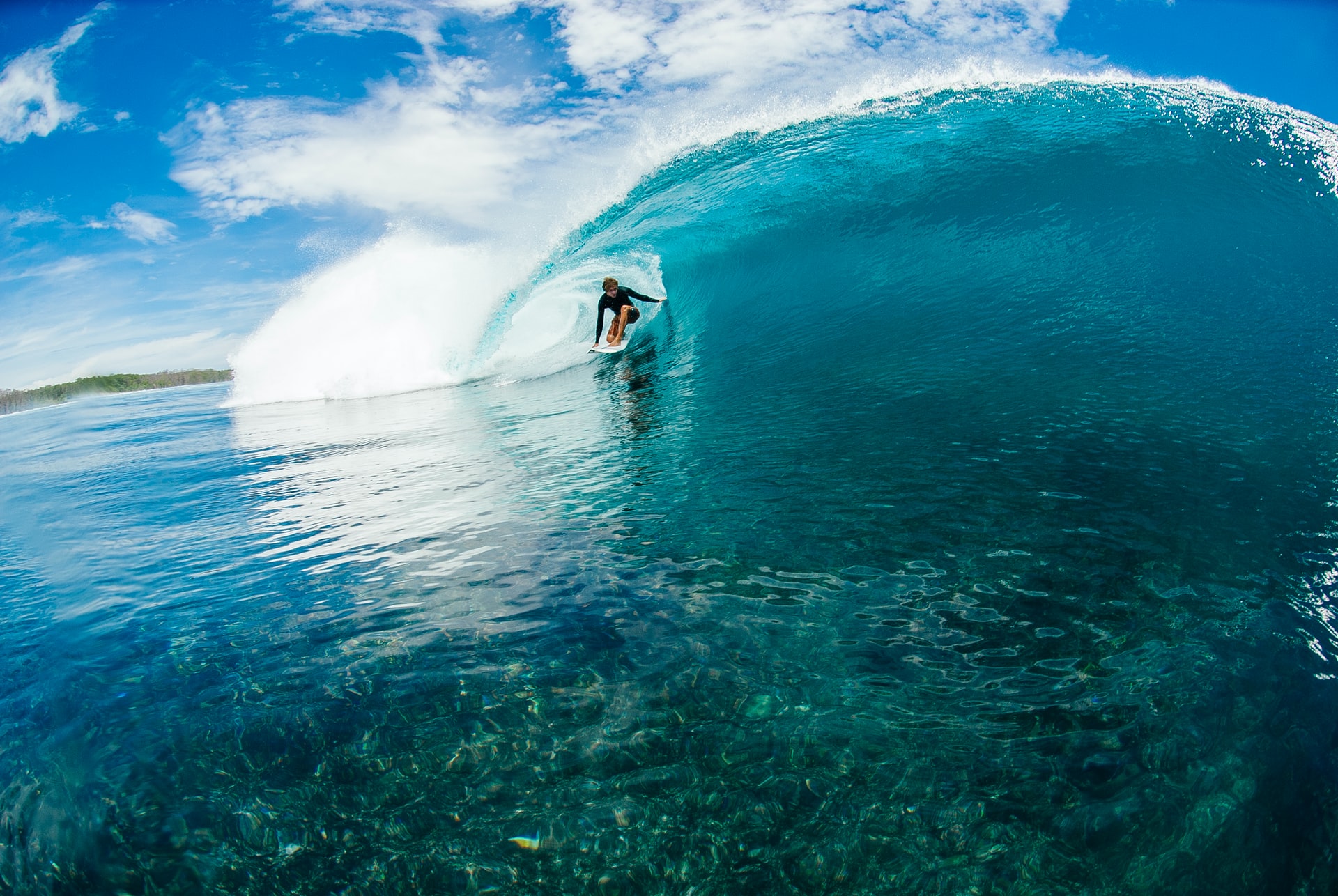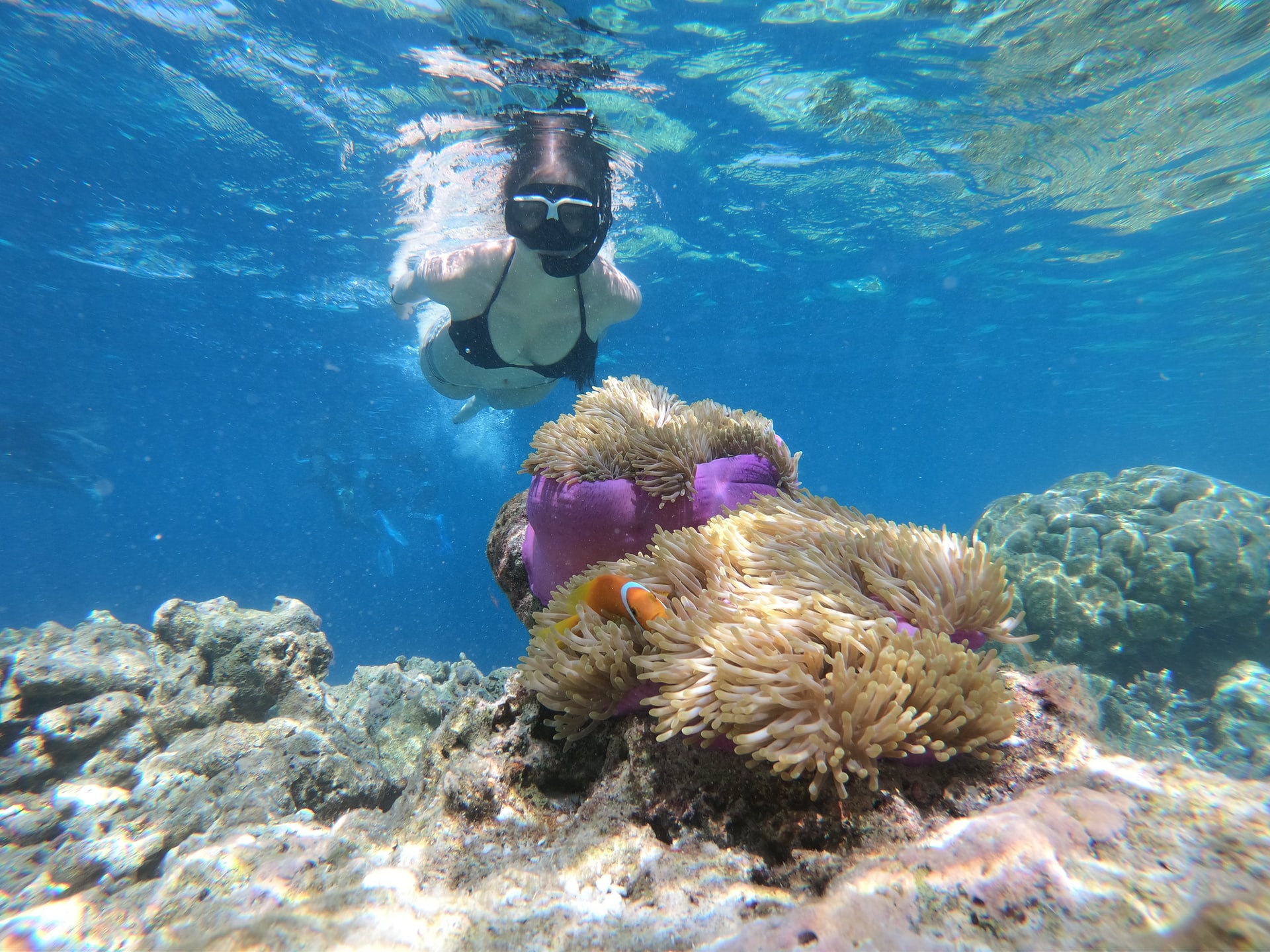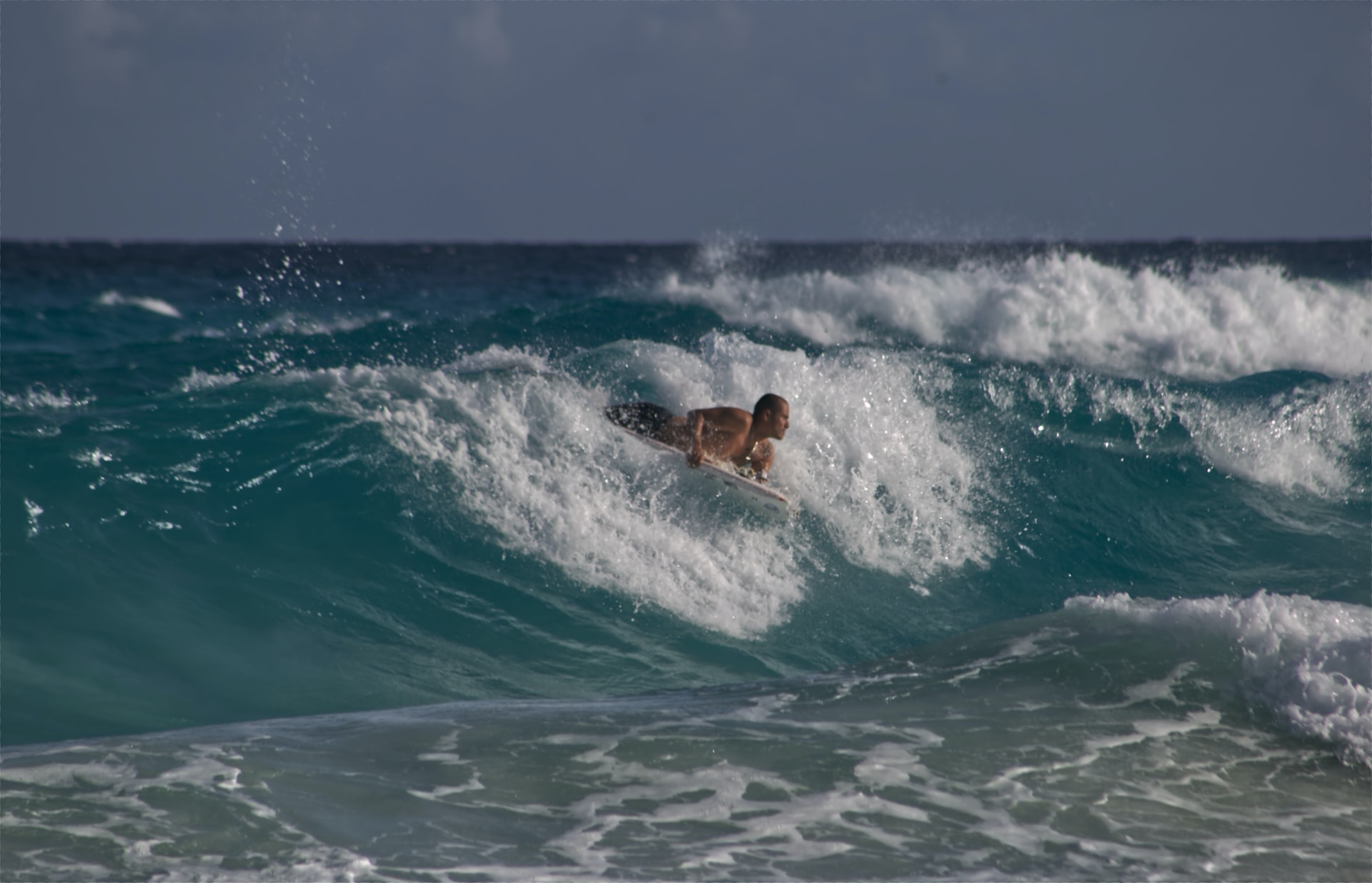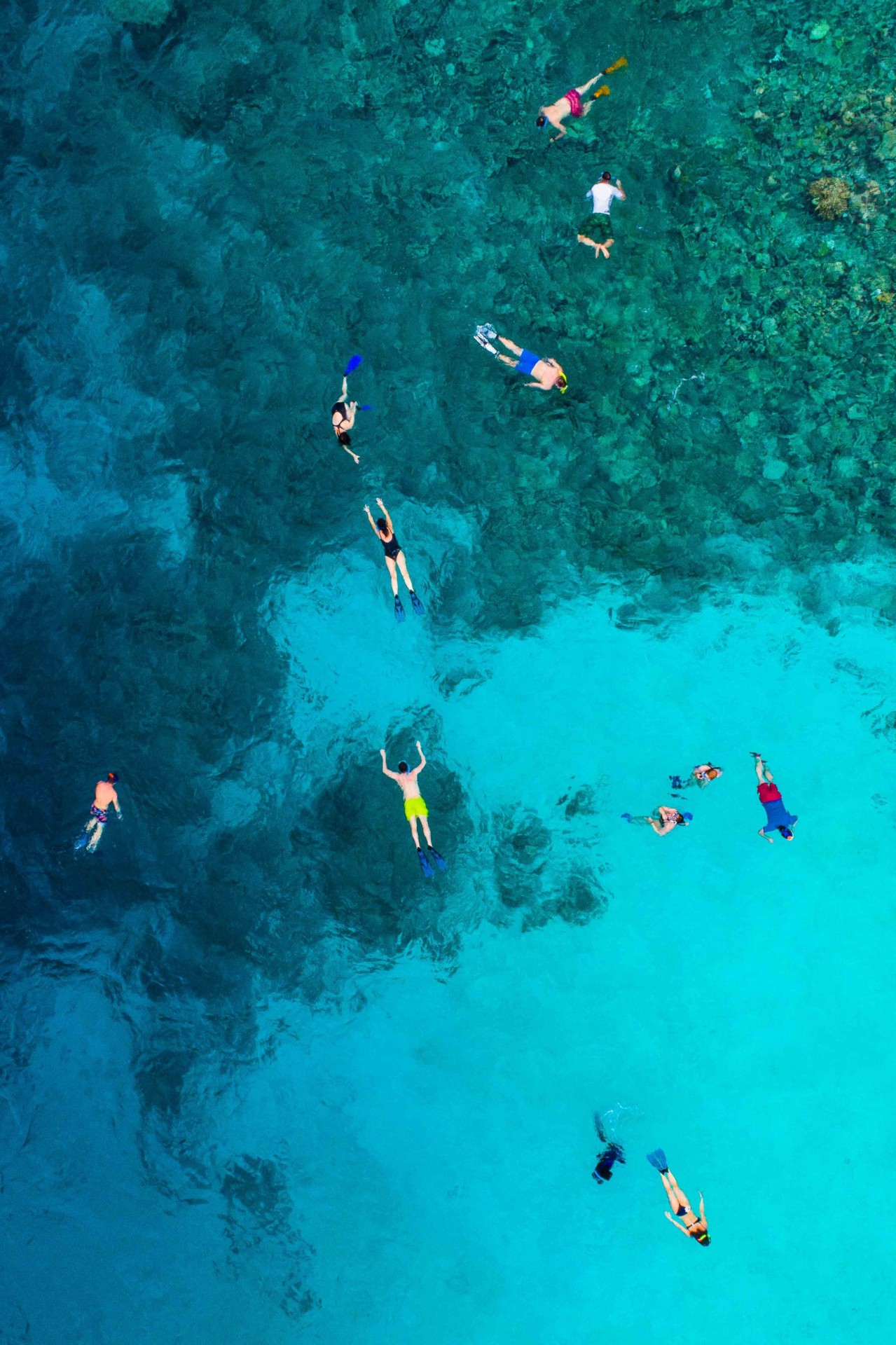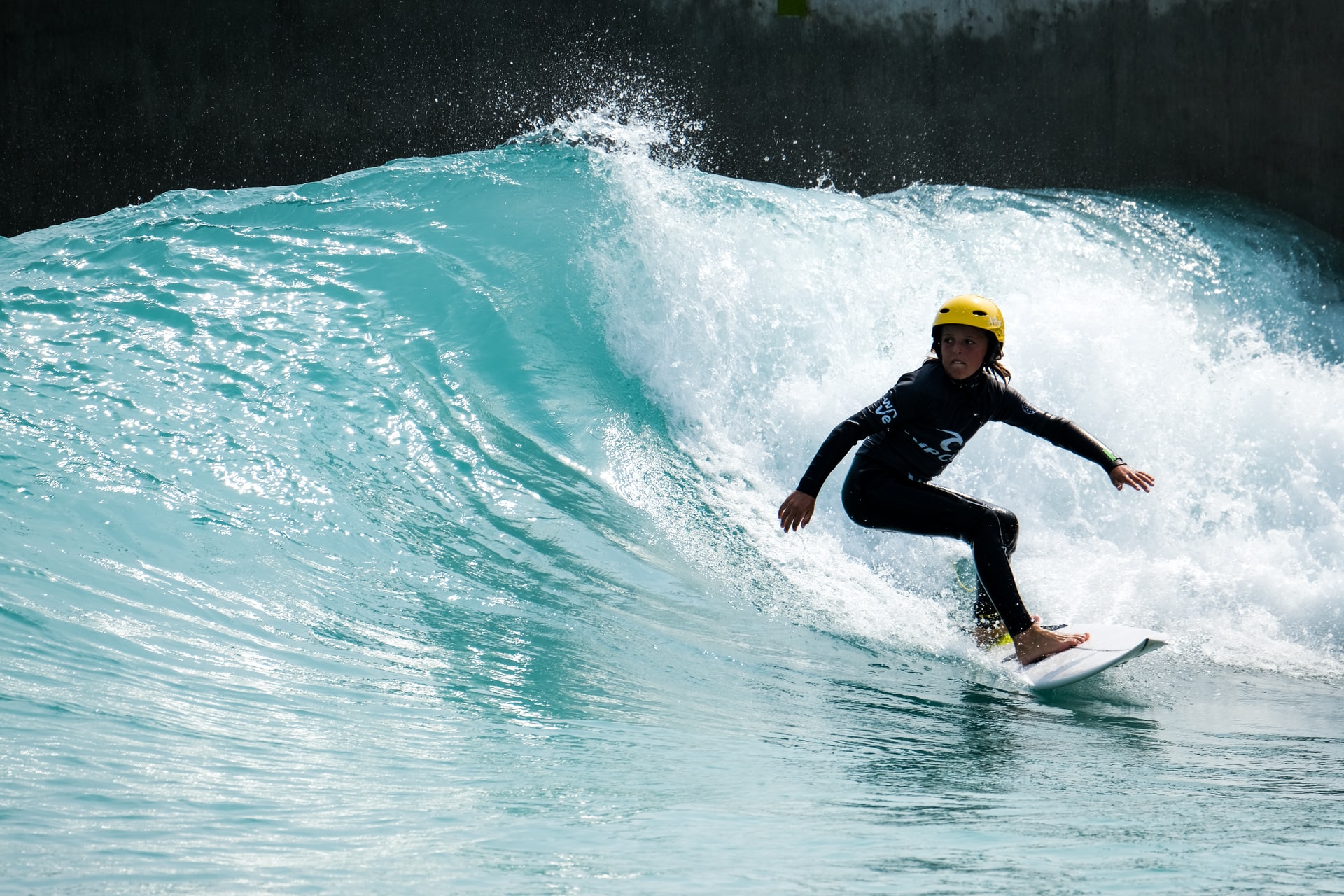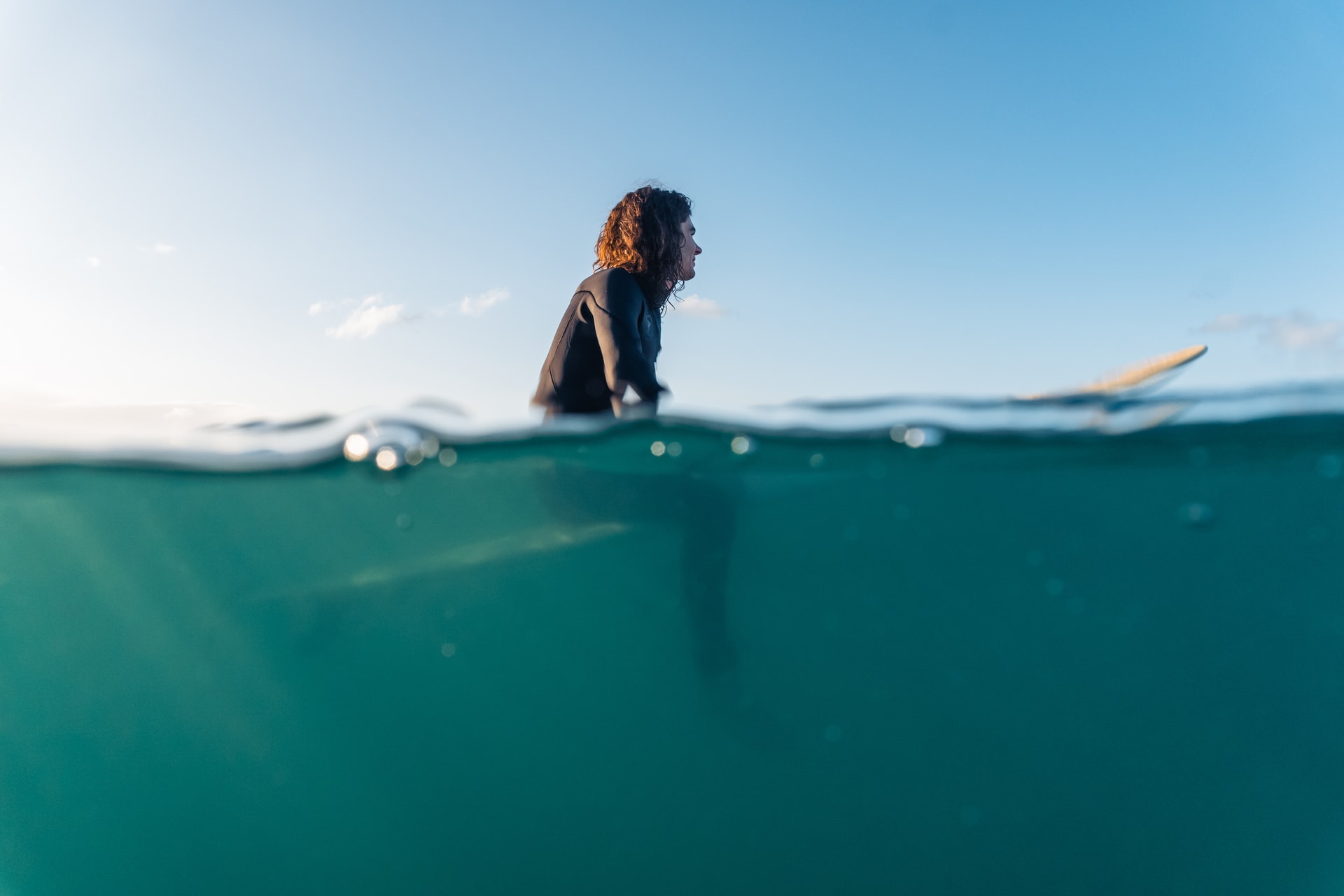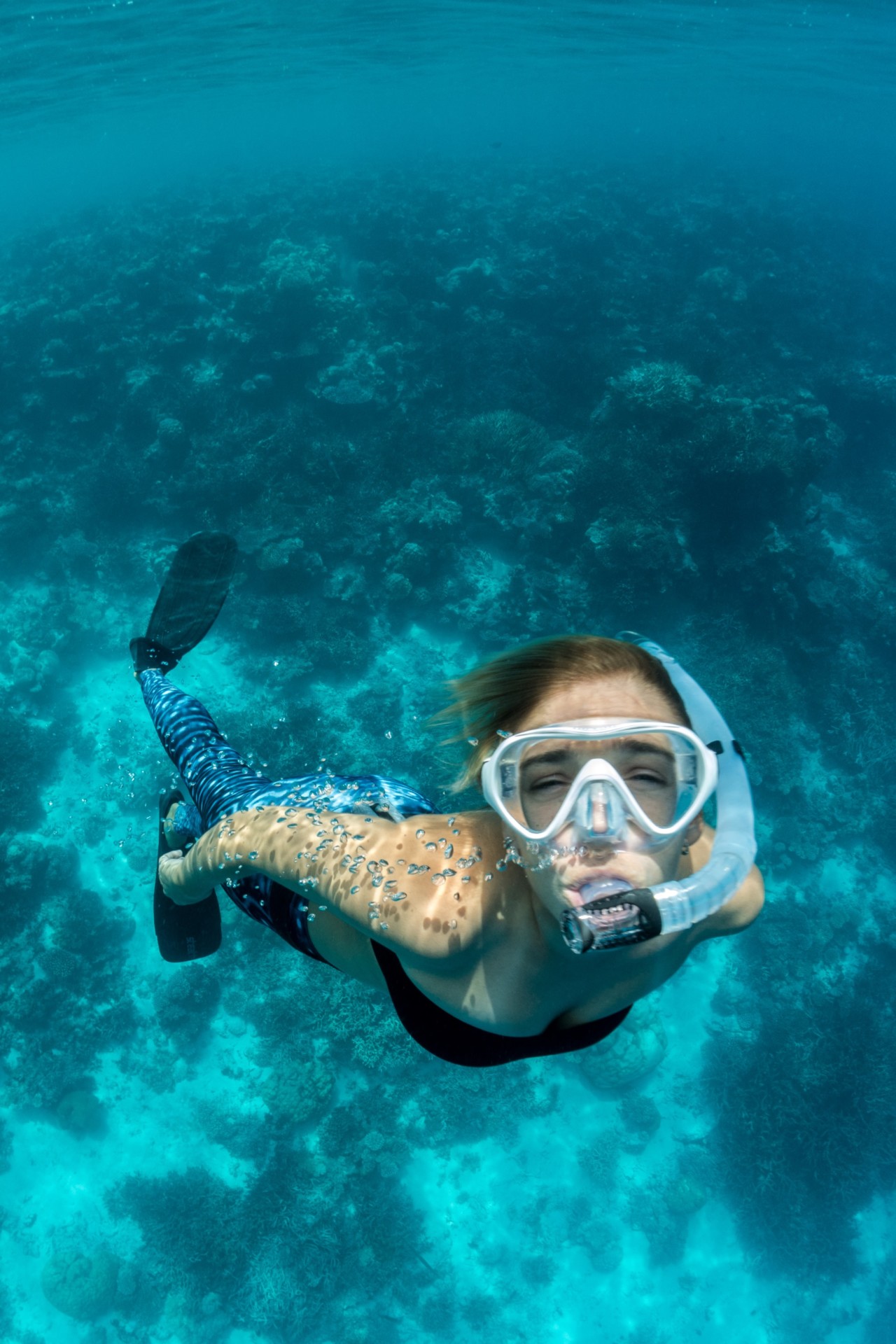Extreme sports seem to be everywhere nowadays. It hardly seems possible for a sport to be considered exciting or marketable without being “extreme.”
For many people, when they think about scuba diving, the first image in their minds will be of a tanned diver effortlessly cruising over pristine coral reefs.
Hardly an extreme sport, more a perfect leisure activity, surely?
Maybe. But like so many things in life, scuba diving can be precisely what you make of it.
We encourage everyone to enjoy scuba diving safely and how they see fit.
For many, this might well be relaxed holiday diving, perhaps interspersed with some underwater photography to show to friends and family the wonders that they’ve enjoyed.
But for others, this might not be enough. They might be seeking a bigger thrill or challenge underwater.
If you choose, it’s possible to take yourself onward from just blowing some bubbles and take up some of the most extreme challenges available anywhere.
This article will show you how scuba diving can be one of the most extreme sports out there.
- Is Scuba Diving a Sport?
- What is an Extreme Sport?
- Is Scuba Diving an Extreme Sport?
- What are the Most Extreme Forms of Scuba Diving?
- What are the Most Extreme Scuba Dives Ever?
- Conclusion
- You Might Also Like…
Disclosure: this post contains affiliate links (clearly marked with ), which means we may earn a commission if you buy something through them, at no additional cost to you.
Is Scuba Diving a Sport?
Before considering if it’s “extreme,” can we even call scuba diving a sport?
We can define a sport as:
“an athletic activity requiring skill or physical prowess and often of a competitive nature…”
Straight away, we can see some of these boxes ticked by scuba diving.
To dive successfully, skills must be learned. Buoyancy control must be mastered to a sufficient degree, and competency levels must be met to deal with minor incidents underwater, so they don’t become major problems.
As a physical activity, an effort is required to swim both below the water and at the surface.
But it is mastering the control underwater of our movement, especially our fin kicking to become great divers that we can see a “physical prowess” being involved.
But where’s the competitive nature?
It could be found in merely dedicating time to the activity, practicing, and improving yourself.
For example, this might be enjoying diving so much after you learn on holiday that you join a club at home and end up doing some local coldwater diving too.
It could also be in taking further courses after you have learned to dive.
Often in sports, there are different levels to master. Think about the colored belts in karate or climbing the divisions in football.
The scuba diving training agencies have tiered levels of qualifications for you to accomplish.
You can choose to grow by improving existing skills or adding new areas of interest and knowledge.
As you develop your capabilities as a diver and find the areas that interest you, it’s possible to move further from “just” a sport or leisure activity and enter the extreme realm.
What is an Extreme Sport?
An extreme sport is defined as:
“involving a high degree of risk and often involving … a high level of physical exertion and highly specialized gear.”
These sports will often include an element of lack of control due to taking place in natural environments that are unreliable and often unforgiving.
Such environments might include wind, snow, and water, which cannot be controlled fully and may contribute to a challenging outcome.
A scientific paper defining extreme sports suggests that the participant may need to be interested in and possess the ability to cope not just physically but also mentally with highly pressurized situations where:
“…the participant is subjected to natural or unusual physical and mental challenges such as speed, height, depth or natural forces and where fast and accurate cognitive perceptual processing may be required for a successful outcome”
What Makes Extreme Sports Attractive?
For many, this will be the thrill of participating.
The adrenaline rush from being on the edge and “beating nature.” Of feeling the extreme fear and overcoming it, and in that, expanding their comfort zone.
For others, it might be the challenge of getting themselves somewhere where very few have been. Perhaps descending from a mountain top rarely or ever visited.
Whatever it is, we can say that the thrill is addictive for many, and they will push themselves further and further.
This factor can make extreme sports dangerous and accident-prone.
The inducement to go just that one step further, and elements brought by nature’s unpredictability, can end in injury or worse without great care.
What are the Most Popular Extreme Sports?
Extreme sports can be found on land, in the air, and on and under the water.
Options for the thrill and buzz of pushing the limits can be found in many vastly different areas.
Some of the most popular extreme sports include:
- BMX Racing
- Slacklining
- Downhill Mountain Bike Racking
- Volcano Boarding
- Heli-skiing or boarding
- Zorbing
- Ice Climbing
- Kite Surfing
- Whitewater Rafting
These sports complete our definitions above by being open to a high level of risk, requiring considerable skill, often needing specialist equipment, and being open to the influence of aggressive and uncontrollable natural elements.
Is Scuba Diving an Extreme Sport?
While needing to give suitable attention to basic safety requirements, it’s entirely possible for scuba diving to be a relatively straightforward and relaxing leisure activity.
However, if the diver should choose, we can say without a doubt that scuba diving can fit the definitions for being an extreme sport.
More advanced types of scuba diving can offer risks requiring in-depth training, attention to detail, and planning, as well as specialized equipment.
Extreme dives are open to more variables and influence from natural forces such as strong currents.
Animal interactions can add further adrenaline and excitement to the mix through perceived risk.
This kind of diving can offer the most significant rewards as long as it is done with proper planning, contingencies, and respect for the natural environment.
What are the Most Extreme Forms of Scuba Diving?
Beyond enjoying scuba as a relaxing activity, there are a large number of more specialist types of diving that can be as extreme as you want them to be.
1. Shark Diving
One of the most common questions that a non-diver will ask a scuba diving friend is, “Have you ever dived with sharks?”
Unfortunately, films and the media have given many people the false impression that sharks are unstoppable killing machines just looking to gobble up any diver foolish enough to enter the ocean.
The truth could not be further! Thousands of dives take place each year with sharks without incident.
Many divers will actively seek shark encounters for their beauty as well as the adrenaline thrill.
Sharks are some of the most majestic and misunderstood creatures on earth.
While yes, they deserve a certain amount of respect and caution, the reward of seeing them up close underwater is unforgettable.
2. Night Diving
Diving at night offers a whole new outlook even in a location that a diver is already familiar with in daylight.
Different creatures that are normally hiding during the day can be discovered with your torch. Animals that are usually asleep are active and might be seen hunting for their dinner.
Of course, there is also the thrill of “what might be out there” in the dark!
Underwater torches are used, and special signals must be learned to communicate with fellow divers.
For many, the night dive is the highlight of a dive holiday due to its unique experiences.
3. Drift Diving
Could there be much more extreme than “flying” along underwater in a current that is taking you where it wants to go?
Drift diving is one of the most fun types of diving and done correctly, can take you to the most lively, exciting, and wildlife-packed parts of the sea.
In some locations, specialist equipment called “reef hooks” are used to hold the diver’s position in the current and wait for wildlife to come along. These must be used carefully to prevent environmental damage.
When ready, you “unhook” and you’re off and flying!
4. Wreck Diving
Wreck diving can be some of the most advanced diving available.
Not all wrecks are extreme, but some require highly qualified technical-certified divers due to their dangerous environments.
One of the risks involved in entering a wreck comes from silt built up inside the ship. If disturbed, this can instantly create a “silt-out” where visibility can reduce to zero.
Other risks include entanglement or entrapment on debris or restrictions in the wreck that might not be immediately obvious.
These risks and others can, without care, cause the diver to get lost and stuck inside the wreck with a limited and depleting breathing gas supply.
As long as they’re approached with the appropriate care and preparation, wrecks can provide the diver with a fascinating experience.
Many divers enjoy the thrill of visiting these lost ships and will study their history to learn as much as possible about the vessel and how it ended up under the sea.
5. Technical Diving
Technical diving takes you away from the standard depth and time limitations of recreational diving and introduces the opportunity for dives that are deeper or longer.
While regular, open water, single tank recreational diving is relatively straightforward, technical diving is far more complicated and has many more variables and potential risks that must be taken into account.
On deeper or longer technical dives, some limits must be adhered to. For example, it is impossible to swim straight to the surface at the end of a technical dive.
A series of stops at planned depths for fixed time periods must be made for the diver to return safely.
Technical diving will involve extra equipment in the form of extra tanks or rebreather units, backup equipment to solve problems or failures, and carefully made plans and backup plans to cope with all eventualities.
In technical diving, the risk factors are significantly increased over regular diving, so training and understanding the potential problems and avoiding or overcoming them are a must.
6. Ice Diving
Descending under the ice for a dive might seem crazy to some.
Still, to many, it is the ultimate in team diving and requires elements of careful planning and risk that puts it in the extreme category.
Ice diving is carried out in a team of a minimum of four divers. Only one goes into the water at a time. The others carry out various planned roles to ensure divers safety.
The diver is securely clipped to a safety line at all times during the dive. This line is used to ensure the diver can exit the water safely and also for communication.
Although drysuits are used to keep everyone sufficiently warm, dives are limited to a maximum of 30 minutes, to ensure that hypothermia doesn’t become a risk.
Other diving equipment must also be rated by the manufacturers for ice diving. For example, regulators may “freeze” with catastrophic results if they are not correctly ice rated.
Under the ice, freshwater can be found to be extremely clear due to the low temperatures.
Animal encounters, particularly with mammals, are usually longer and more relaxed due to their lowered metabolic rate.
And there is definitely an extreme thrill caused by being underneath solid ice!
7. Cave Diving
Cave diving usually combines technical diving’s extended dive times and advanced diver techniques with the added risk factor of the overhead environment that further limits the ability to exit the dive in an emergency.
Lonely Planet lists Freshwater Cave Diving as one of their “20 Unmissable Extreme Sports” saying:
“…ocean scuba is extreme enough for some, but descending into a hole in the earth to explore a submerged cave system is next-level stuff.”
The rewards for the extensive training and planning needed for cave dives are some of the most awe-inspiring and exclusive sights found on earth.
Cave systems have often been flooded over many thousands of years as water levels have risen.
Previously above the surface, geological remains like stunning fields of stalagmites and stalactites can be found now underwater.
Even submerged remains of the habits of prehistoric animals and man have been found cave diving. So this kind of diving can also provide tremendous historical interest.
What are the Most Extreme Scuba Dives Ever?
Like any genuine extreme sport, scuba has its world records.
These represent phenomenal amounts of hard work, training, planning, and often high costs to the individuals involved.
The competitors and teams here really are at the cutting edge of what a human can achieve.
Deepest Scuba Dive
The deepest-ever scuba dive was made by the Egyptian Ahmed Gabr in Dahab, Egypt, on 18 September 2014 to an astonishing 332.35 m deep!
This fantastic achievement involved meticulous planning, complicated equipment, multiple different breathing gases, and a large support team.
No less than 92 tanks of gas were used, and the dive lasted an impressive 13 hours and 50 minutes. The previous record had stood for nearly ten years at 318.25m.
Longest Scuba Dive
The longest dive ever has several records for different environments. There are records for swimming pool dives (192 hours), for freshwater (120 hours), saltwater (142 hours), and cold water (30 hours).
These staggeringly long times underwater present enormous challenges for the diver. Hydration, feeding, and keeping sufficiently warm are the main problems that must be planned for.
Extremely Extreme Diving Records
As well as the obvious deepest and longest, numerous other “extreme” scuba records have been set.
How about the “Most People Scuba Diving Simultaneously”? 3,131 people in 2019 in Indonesia.
Or even the record for “Deepest Cycling Underwater”? Set at 66.5 m deep!
And a special mention must be made to the “Oldest Scuba Diver”! A gentleman from the USA who in 2019 dived at the age of 98 years and 161 days.
It seems that just like on land, there might be a record for anyone.
Conclusion
We can see that scuba diving can be as relaxed or as extreme as you want it to be. So it can be said that yes, scuba diving can be an extreme sport.
You can choose if you want your diving to be a relaxed holiday activity or, you can turn it into an extreme sport that can take you as far as you’re willing to go and beyond!
From the thrills of night, shark, and drift diving to the advanced and highly challenging technical and cave diving levels.
With the right training and hard work, you could even look at challenging one of the extreme diving records.
Scuba diving as an extreme sport has its challenges and risks and must be taken very seriously.
But many find the rewards it can deliver underwater far exceed anything that they can find on land.
You Might Also Like…
-
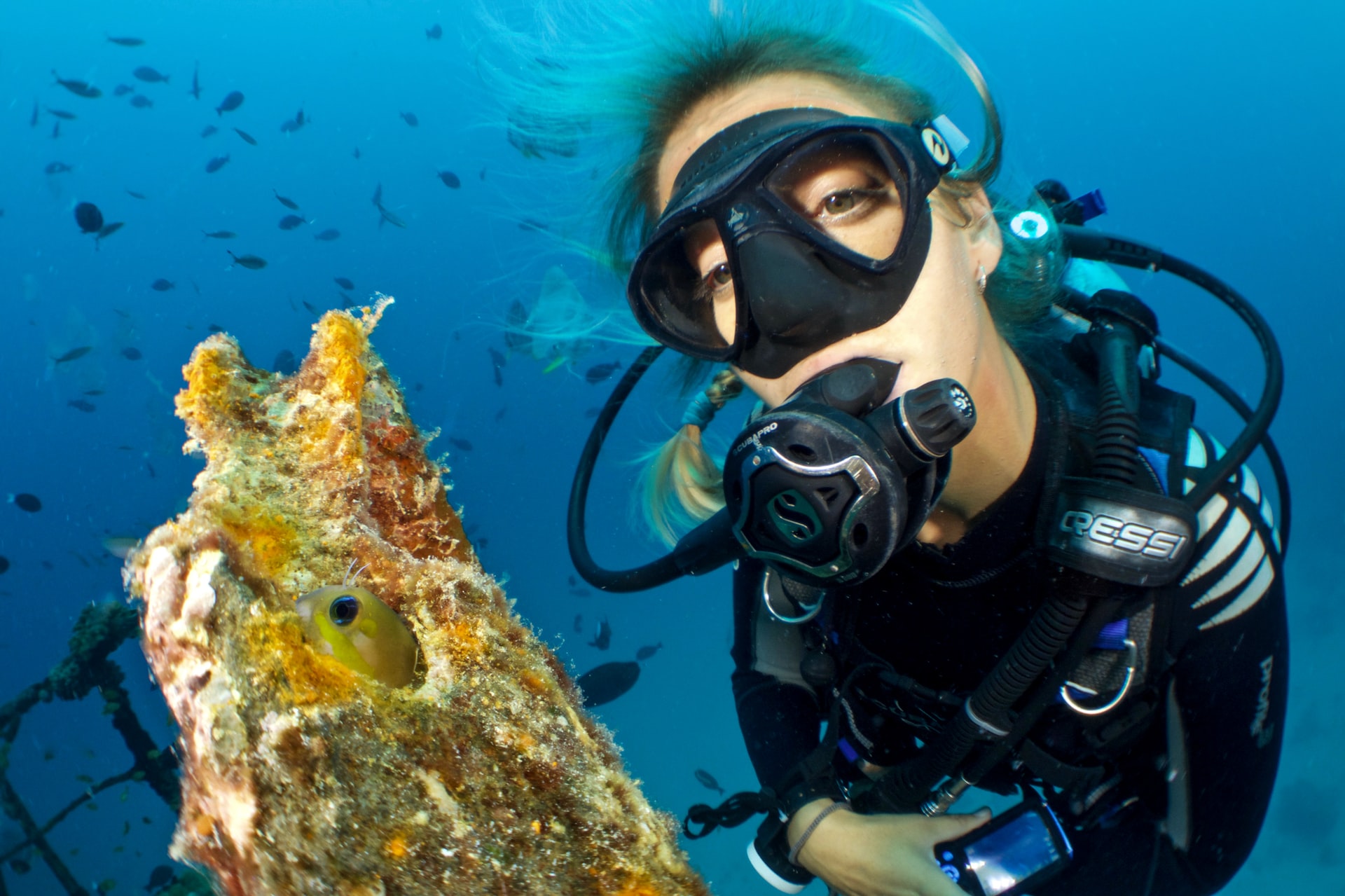
How Do Scuba Divers Drink Water? 5 Possible Ways (+7 Tips)
-
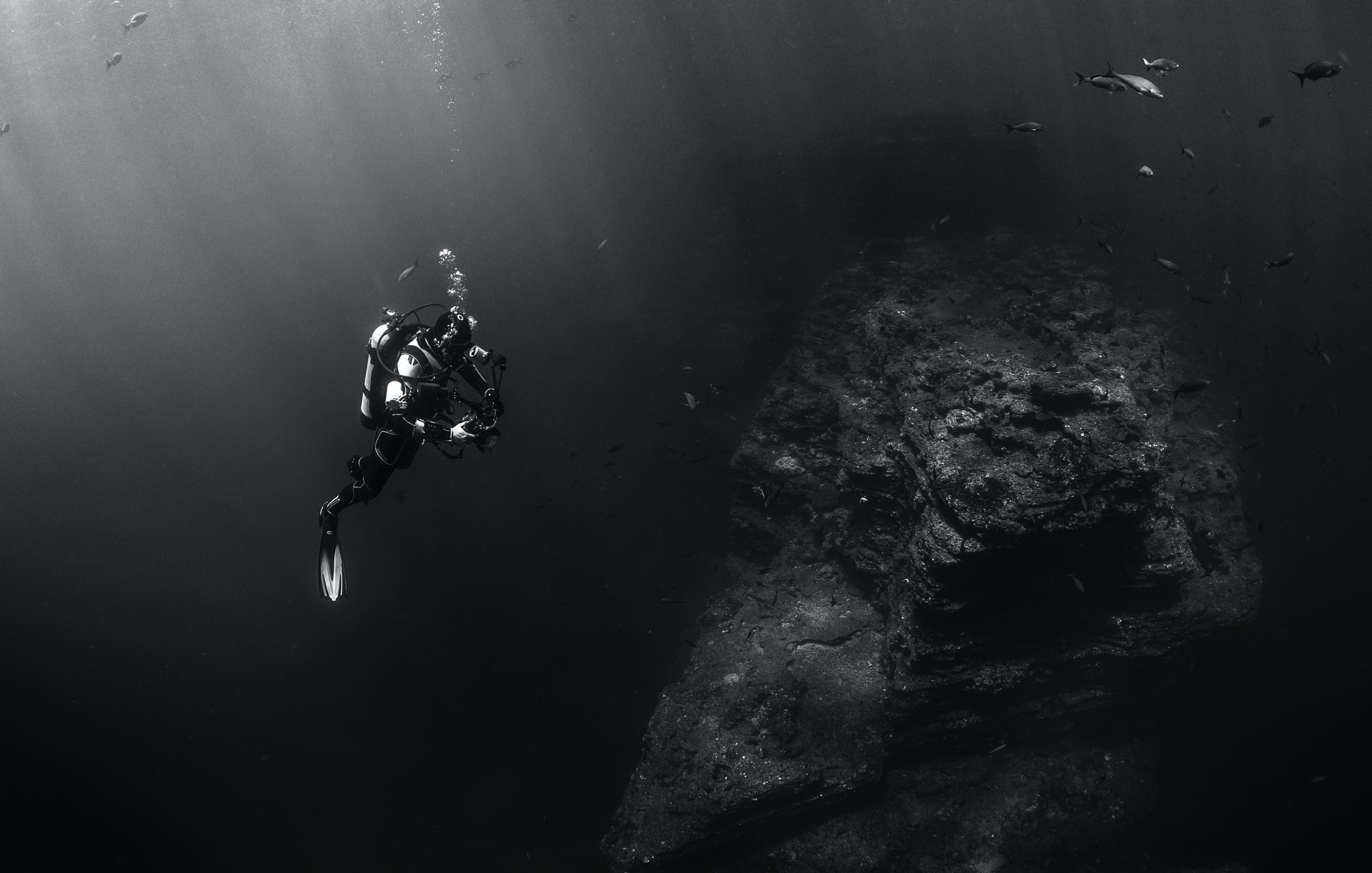
How Long Can Scuba Divers Stay Underwater? (+9 Limiting Factors)
-
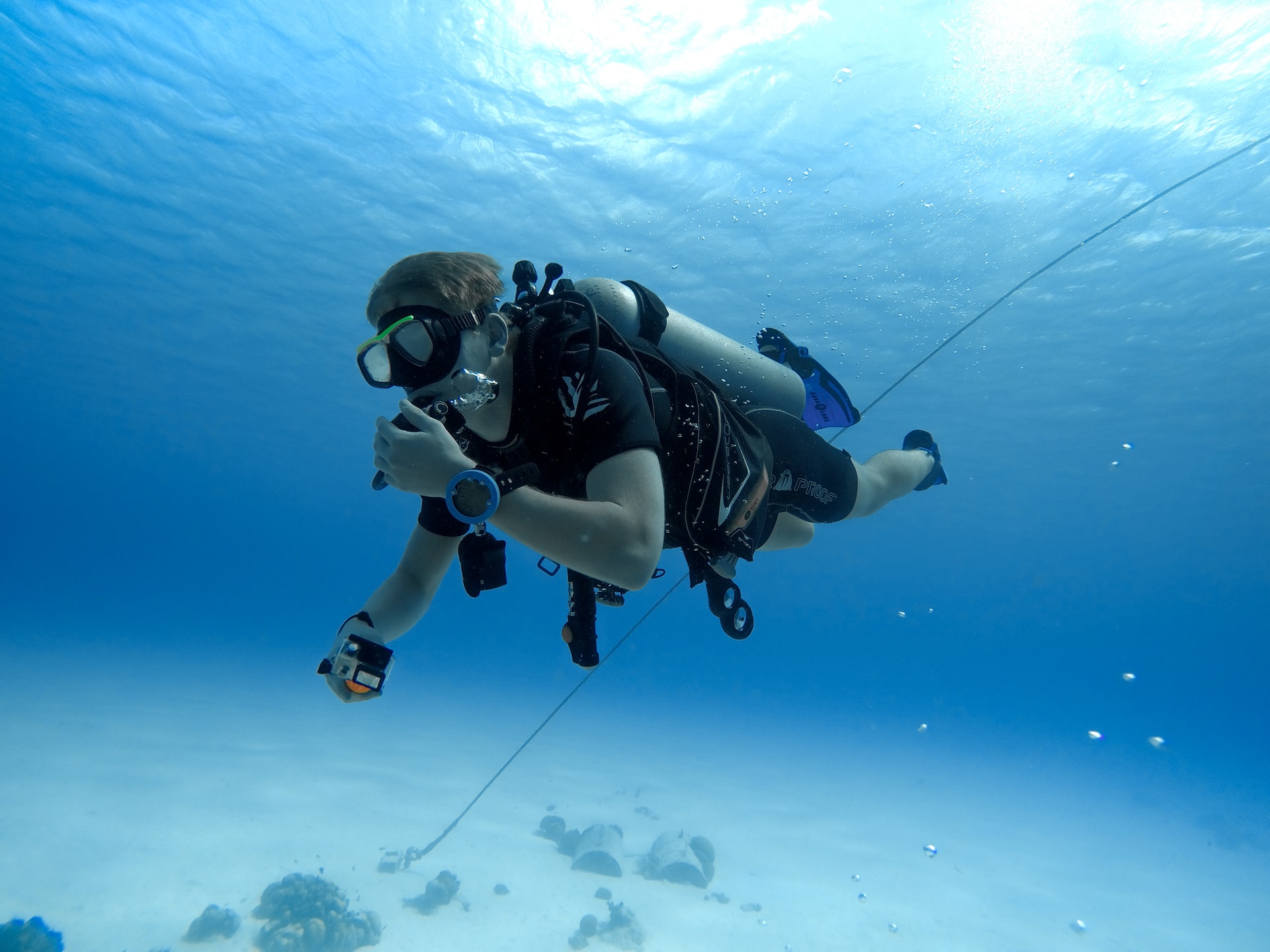
Are Scuba Divers Athletes? All the Facts (+New Competitive Forms)
-
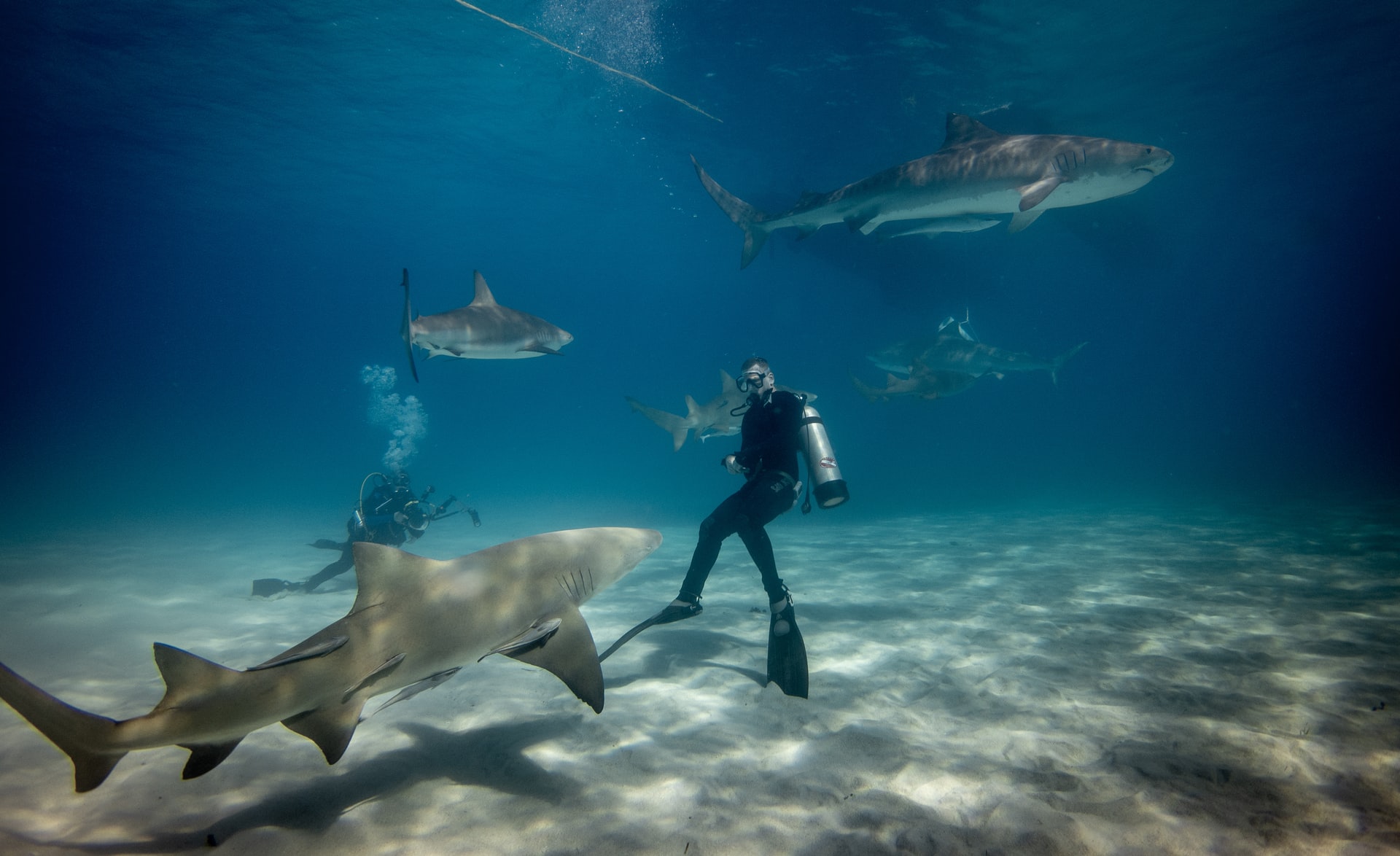
Are Sharks Scared of Scuba Divers? (What Every Diver Must Know)
-
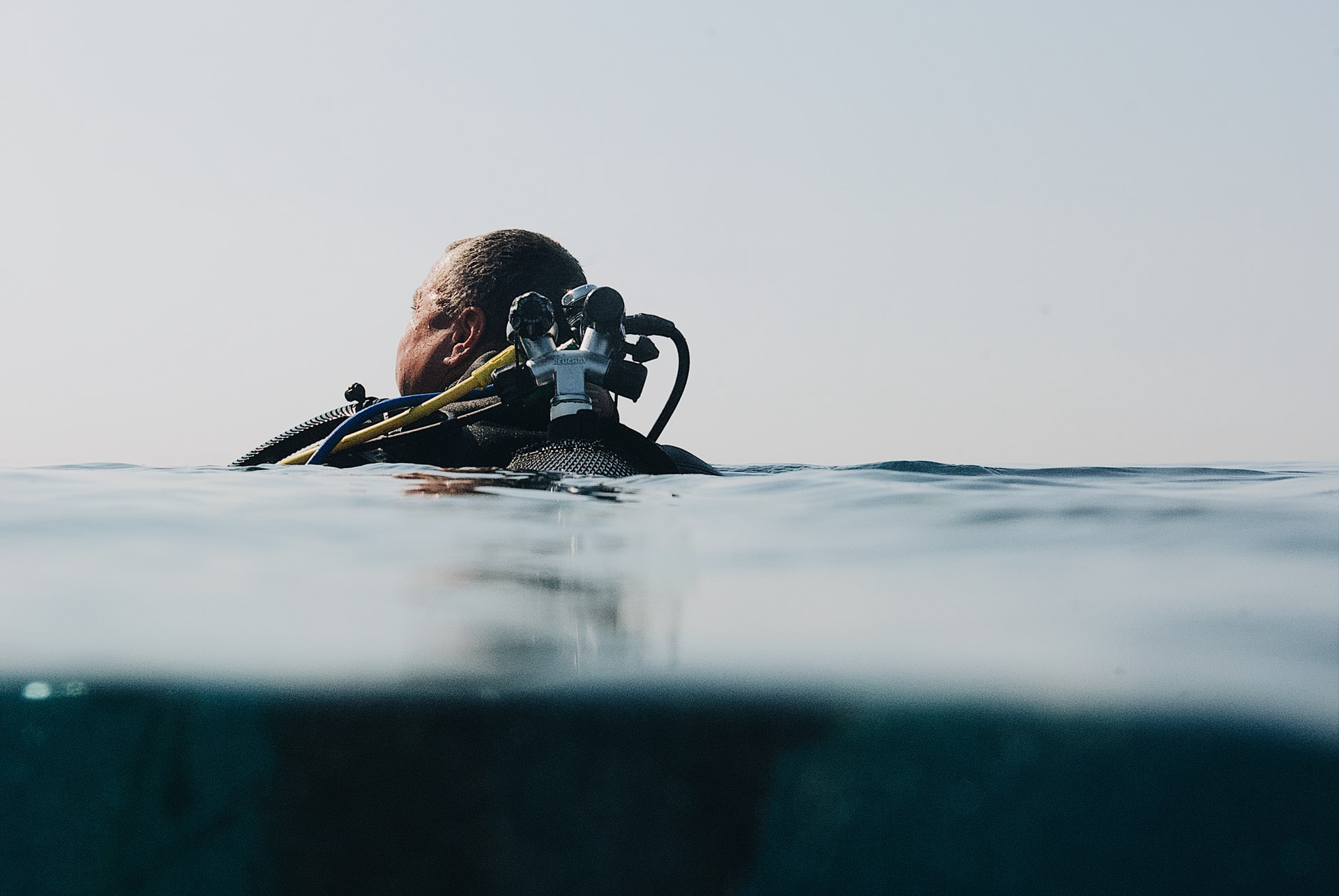
Who Should Not Scuba Dive? 17 Reasons (Every Diver Should Know)
-
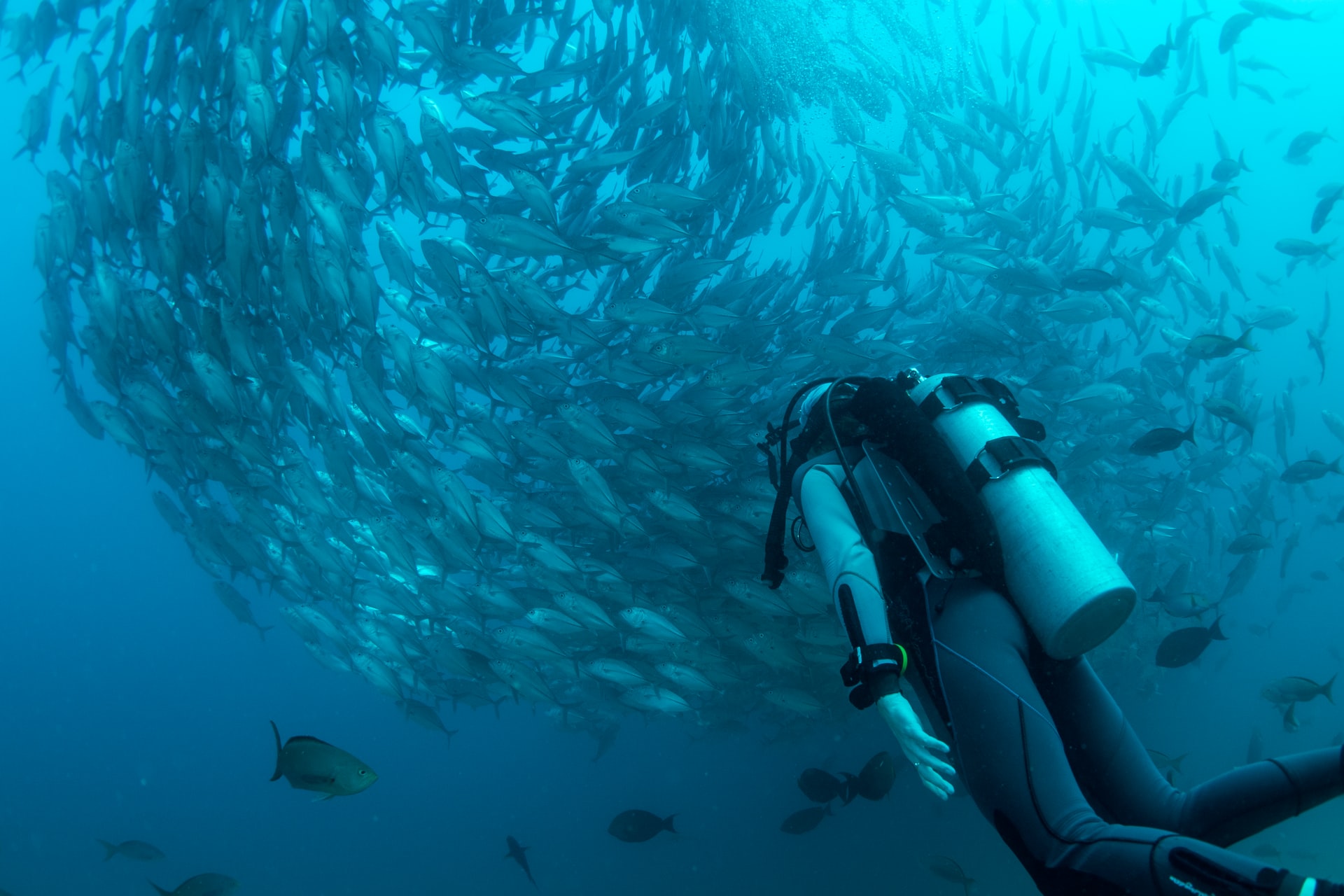
Should I Be Scared of Scuba Diving? 8 Common Fears (Debunked)
-
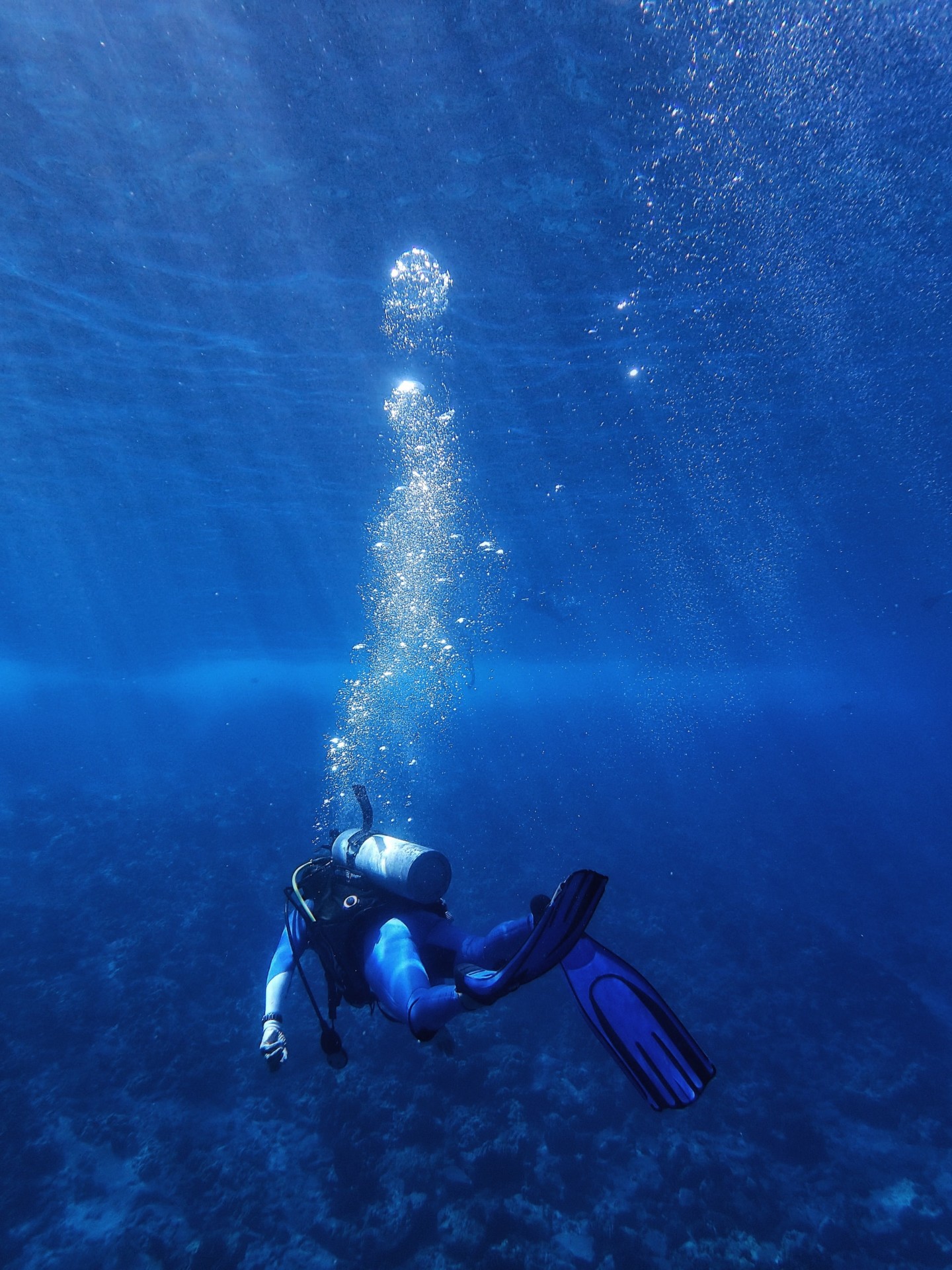
Why Do Scuba Divers Use More Air at Depth? (+4 Practical Tips)
-
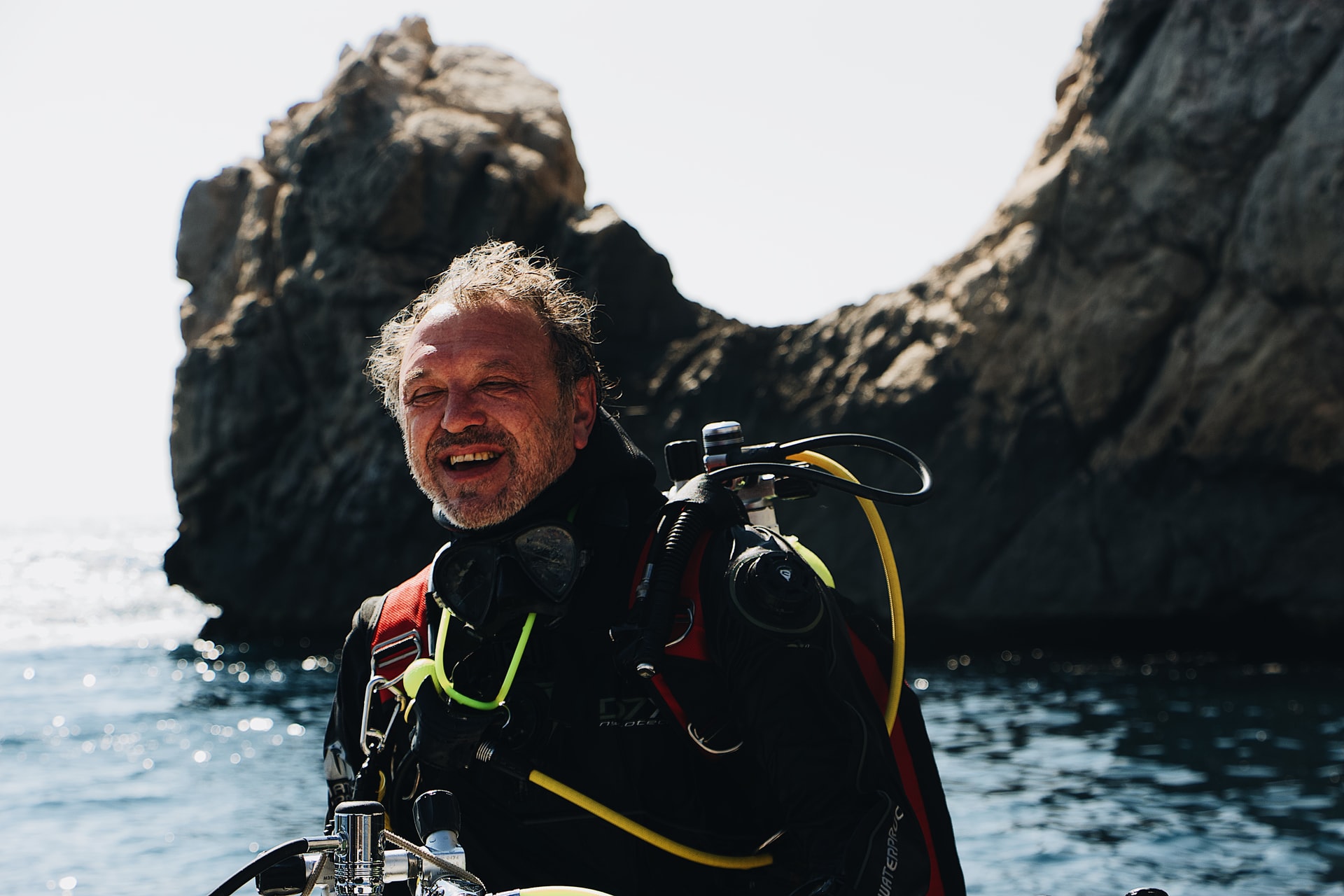
At What Age Should You Stop Scuba Diving? (+9 Tips for Older Divers)
-
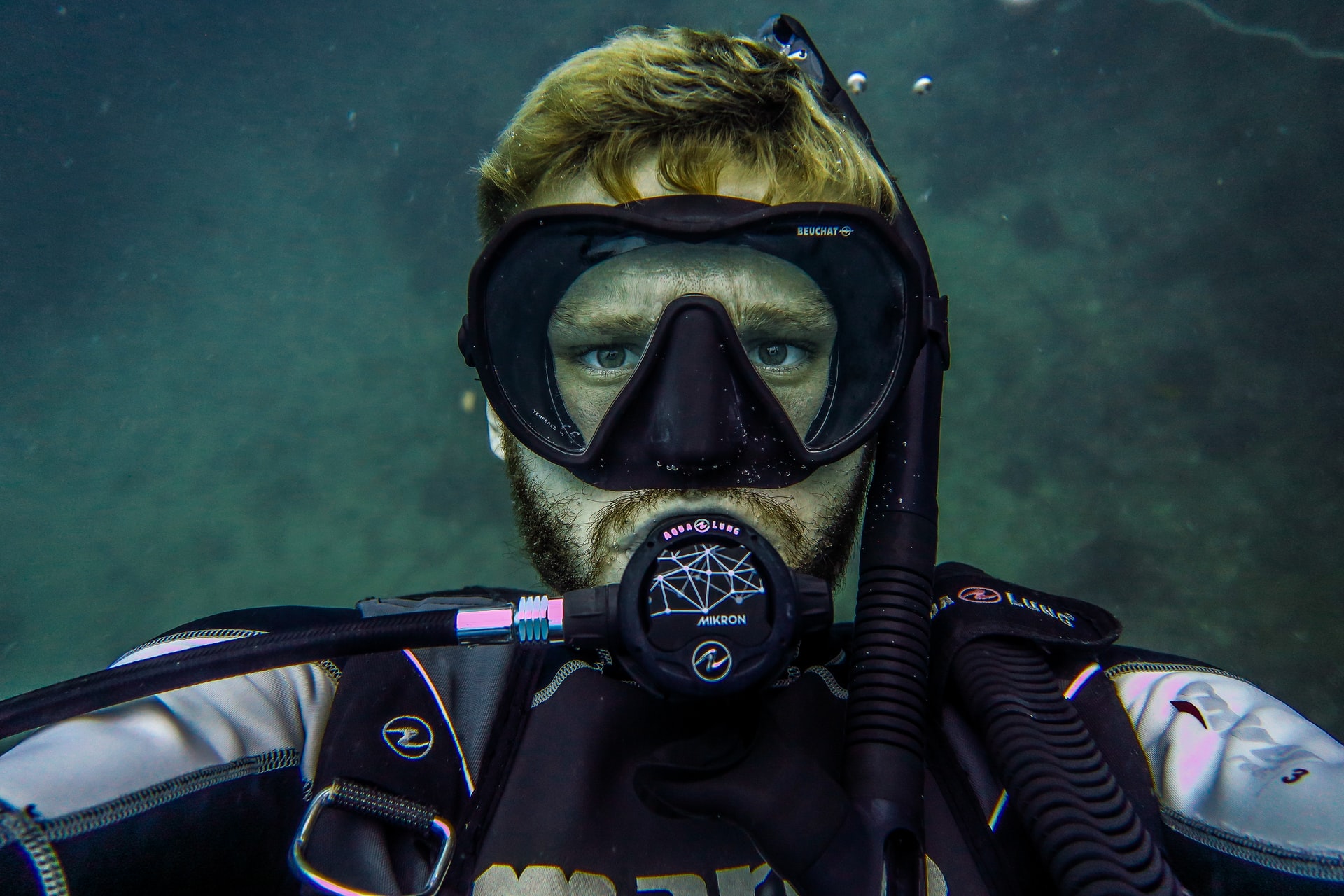
Should I Shave Before Scuba Diving? Crucial Facts (+9 Helpful Tips)
-
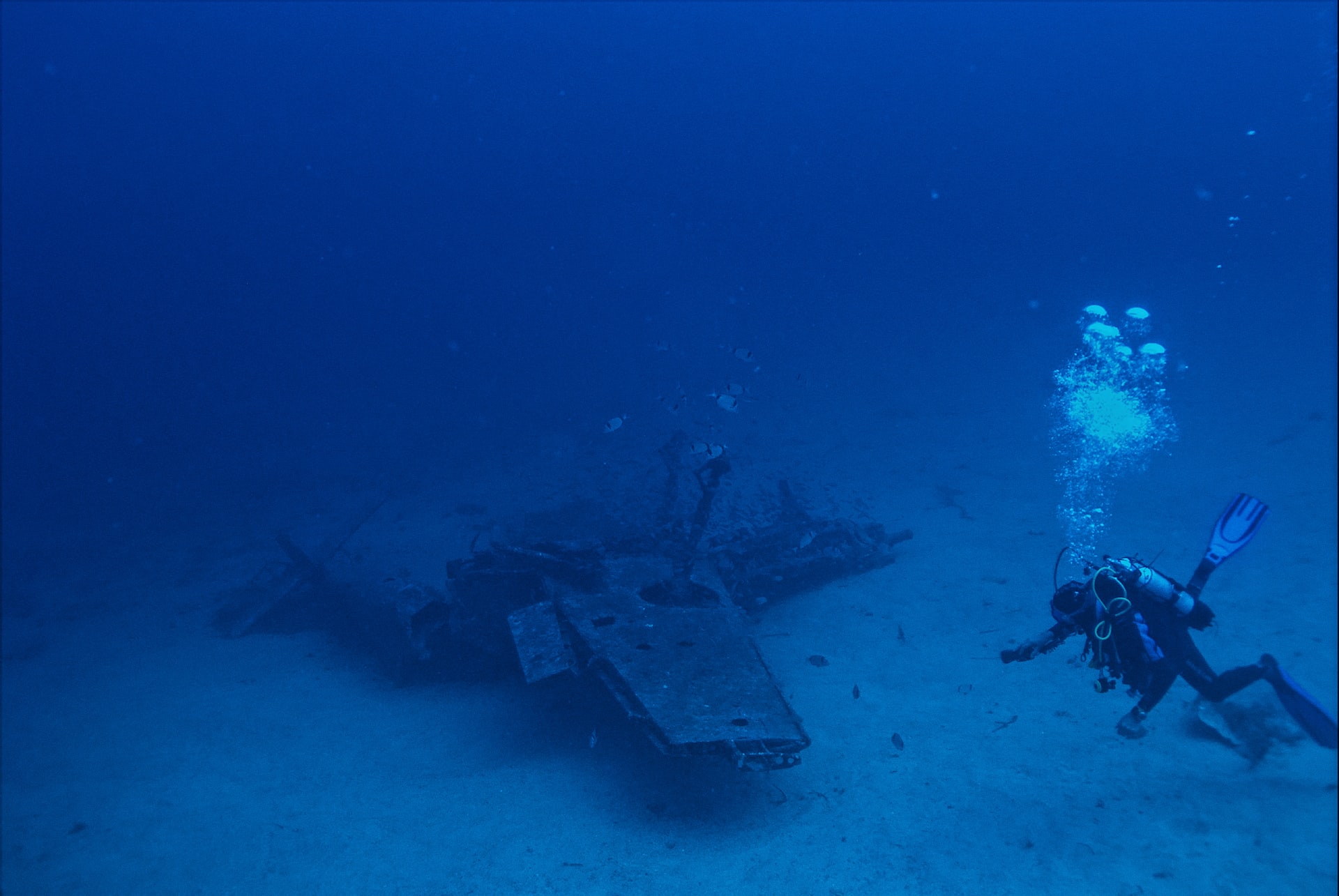
Why Do Scuba Divers Use Helium? (+Its Pros & Cons)
-
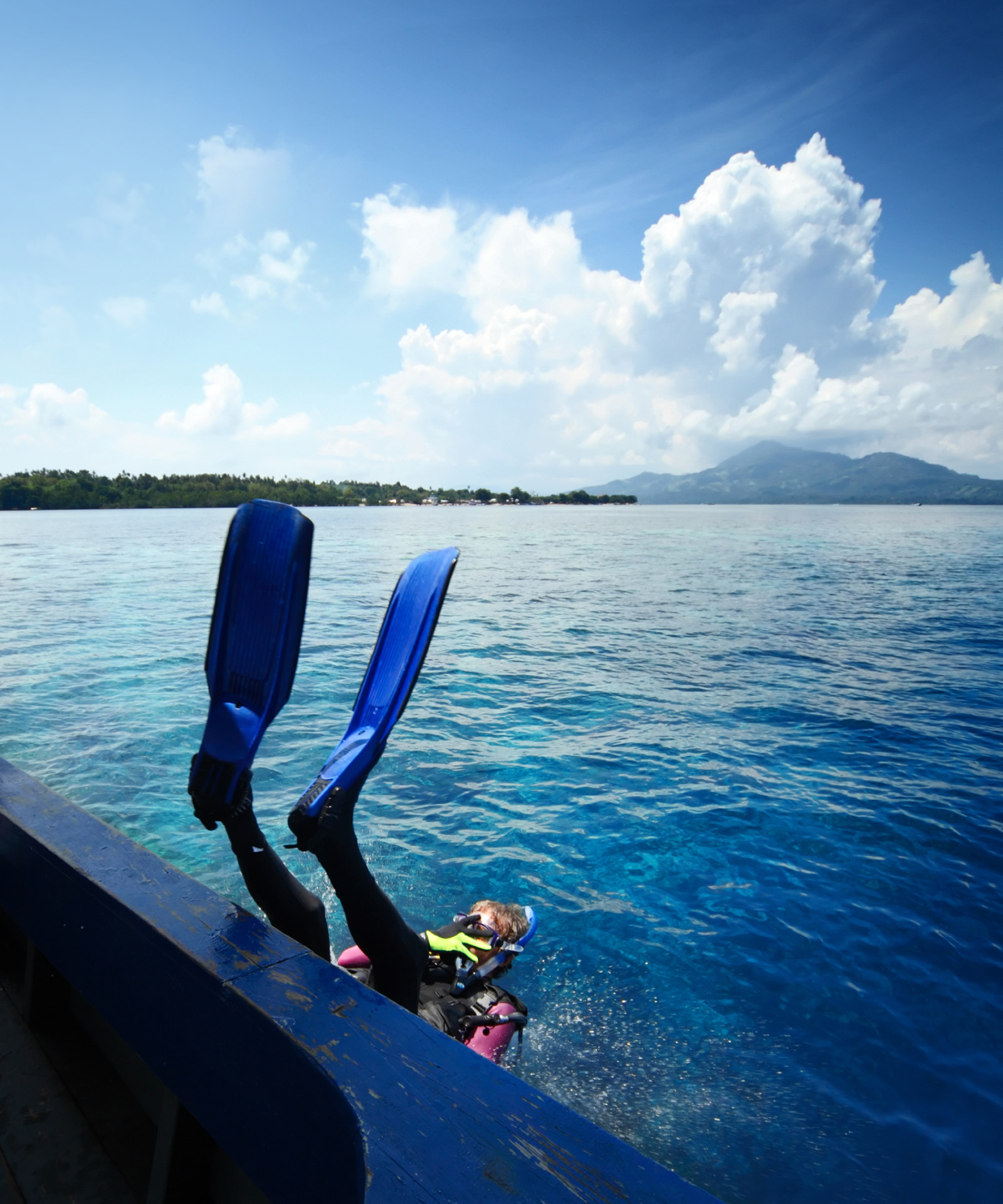
Why Do Scuba Divers Go in Backwards? (+3 Alternative Entries)
-
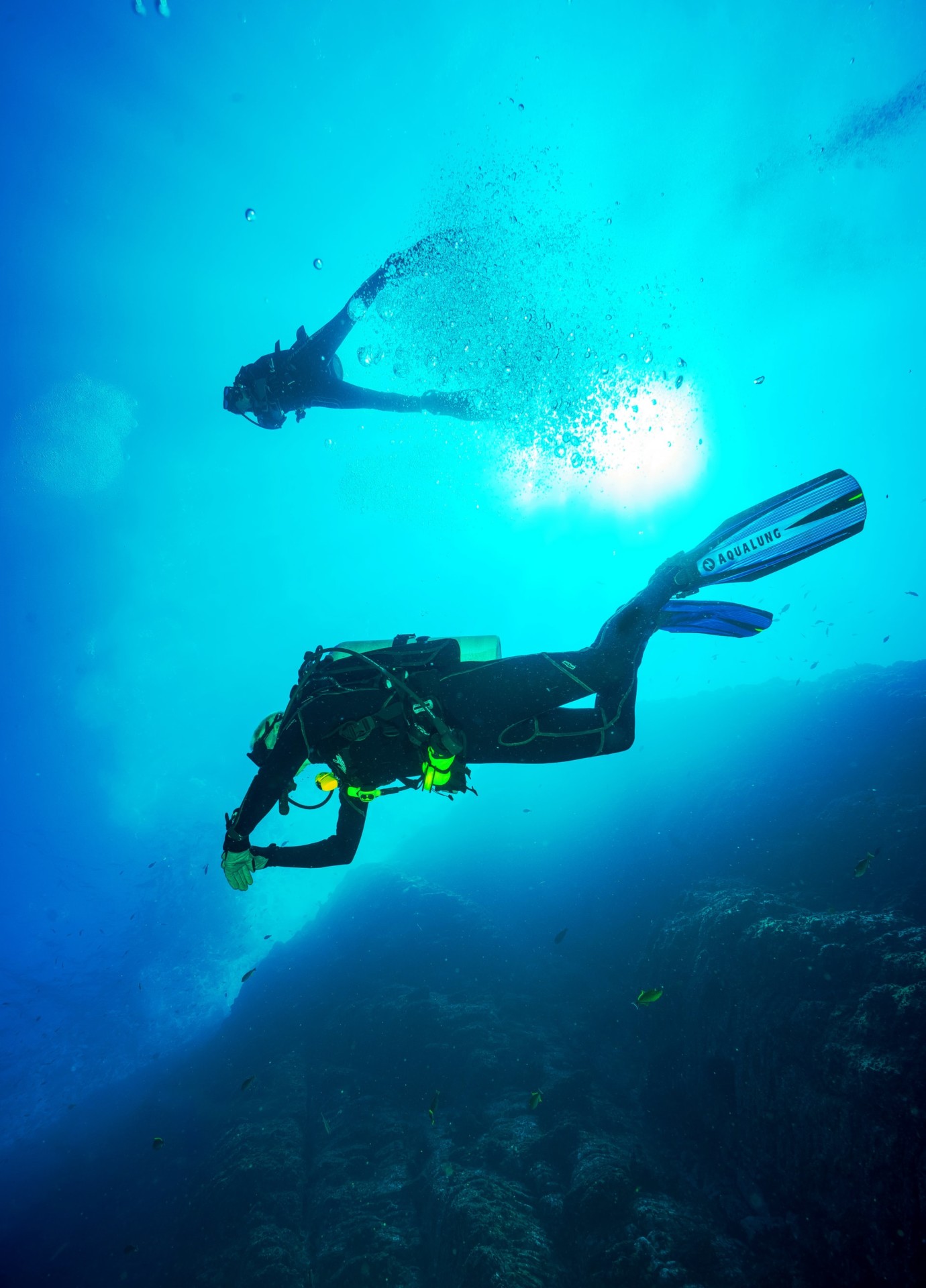
How Do Scuba Divers Sink and Float? (+Tips to Get It Right)

